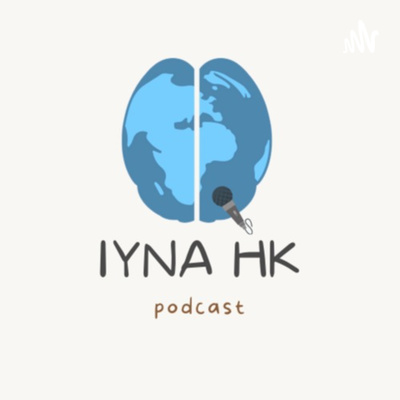The Neurology of Transgender Identity
Description
Even as pride month has passed, Matthew (he/him) and Adya (she/her) dive into the neurology of transgender identity. They look at the neurobiological basis of gender dysphoria and how medication that aids in transformation affects the brain and body.
We hope you enjoyed the episode. Please find us on Instagram at @iyna_hong_kong_official, or email us at iynahongkong@gmail.com if you have any questions, comments or concerns!
CAUSES TO SUPPORT:
https://tgr.org.hk/index.php/en/
Transgender Resource Center, Hong Kong - an organization in Hong Kong focused on raising awareness about the transgender community, especially in education.
Enigma USC: an organization from University of Southern California that does advocacy with legal institutions. It also pursues less researched topics such as the neurobiology of transgender identity, and do advocacy in these communities.
SOURCES:
Gliske, Stephen V. “A New Theory of Gender Dysphoria Incorporating the Distress, Social Behavioral, and Body-Ownership Networks.” Eneuro, vol. 6, no. 6, 2019, https://doi.org/10.1523/eneuro.0183-19.2019.**
Goodson, James L. “The Vertebrate Social Behavior Network: Evolutionary Themes and Variations.” Hormones and Behavior, vol. 48, no. 1, June 2005, pp. 11–22., https://doi.org/10.1016/j.yhbeh.2005.02.003.
Gooren L (2006) The biology of human psychosexual differentiation. Horm Behav 50:58 9–601. doi:10.1016/j.yhbeh.2006.06.011 pmid:16870186
Kiyar, Meltem, et al. “Neuroscience in Transgender People: An Update.” Neuroforum, vol. 26, no. 2, 2020, pp. 85–92., https://doi.org/10.1515/nf-2020-0007.
“What Are Commonly Used Medications for Transition?” – Transline ... https://transline.zendesk.com/hc/en-us/articles/229373208-What-are-commonly-used-medications-for-transition-.
---
**We want to make a note that it was only after the podcast was recorded did we realize Gliske’s research had been retracted due to some errors in the study. Some facts mentioned in the podcast that have been drawn from Gliske are therefore theoretical and not definitive:
- The role of social behavioral networks (Gliske’s second dimension) has been disputed to be accurate, as it was drawn solely from mammal data. Other researchers have disputed this as transferable to humans.
- Gender identity in children can develop at age 2, but is often developed between the ages 3-5
The bottom line that 1) there are anatomical differences in the cis and trans brain (BNST, central extended amygdala, etc.) and 2) there is not enough research to understand functional differences in trans and cis brains holds true.










